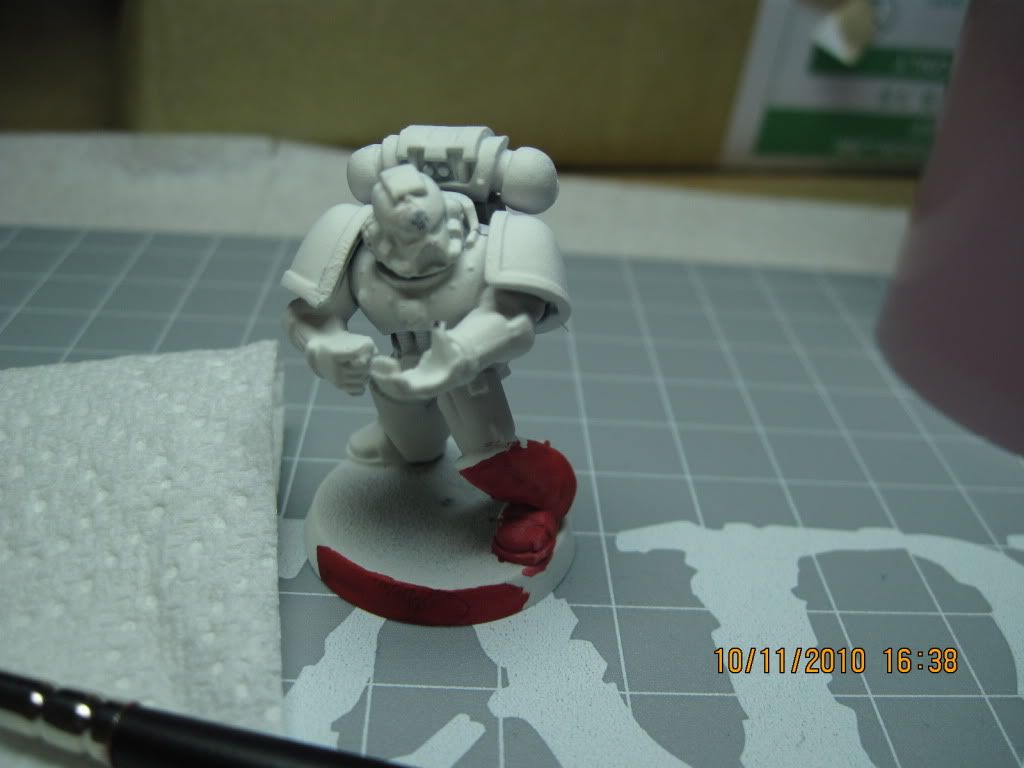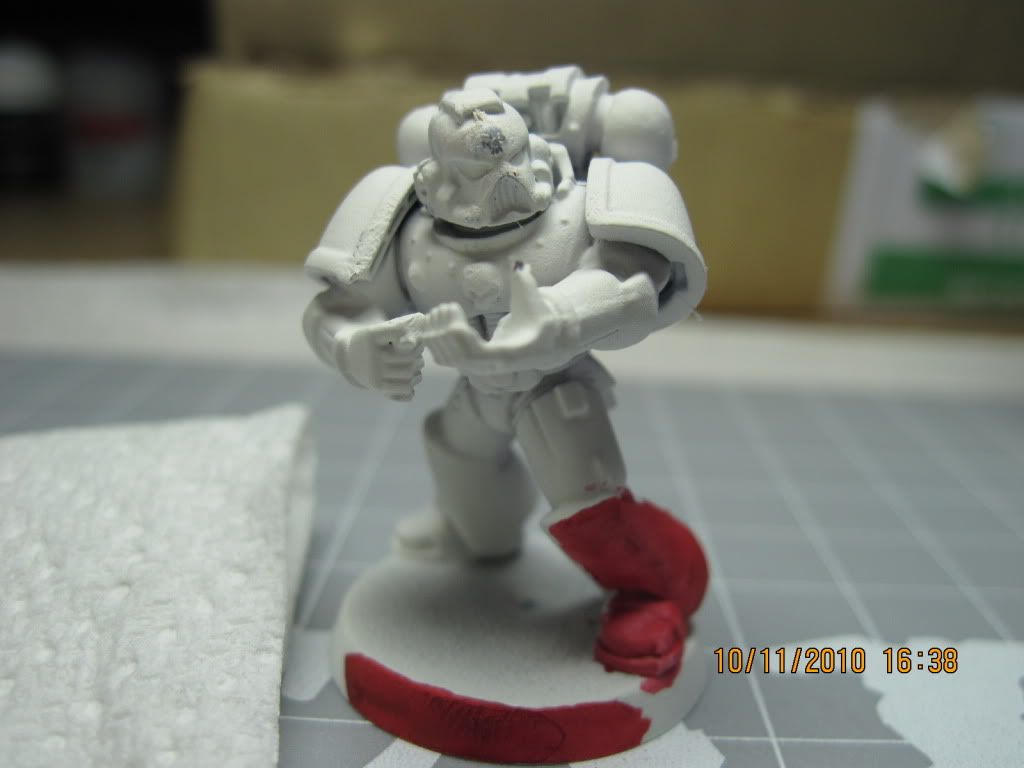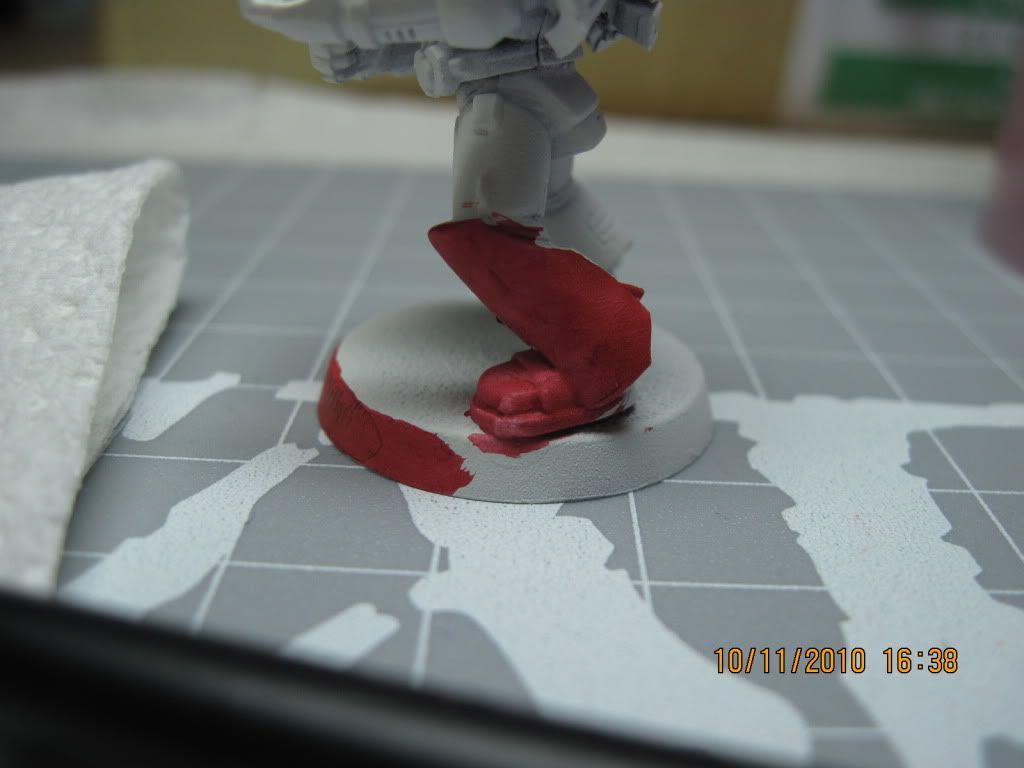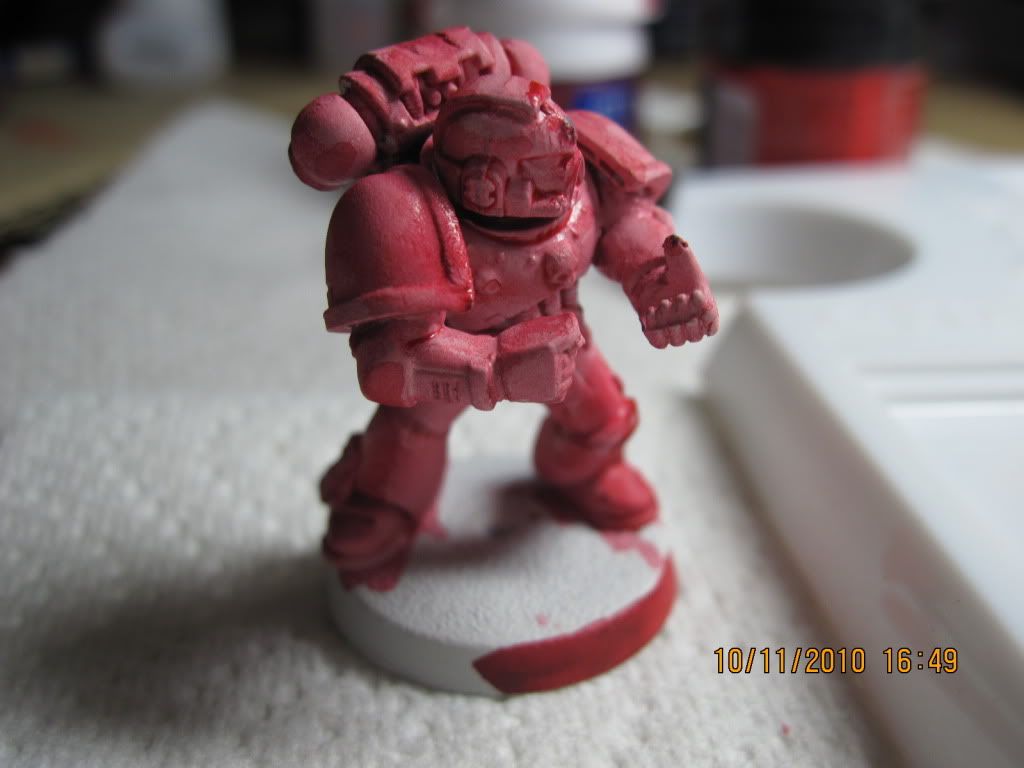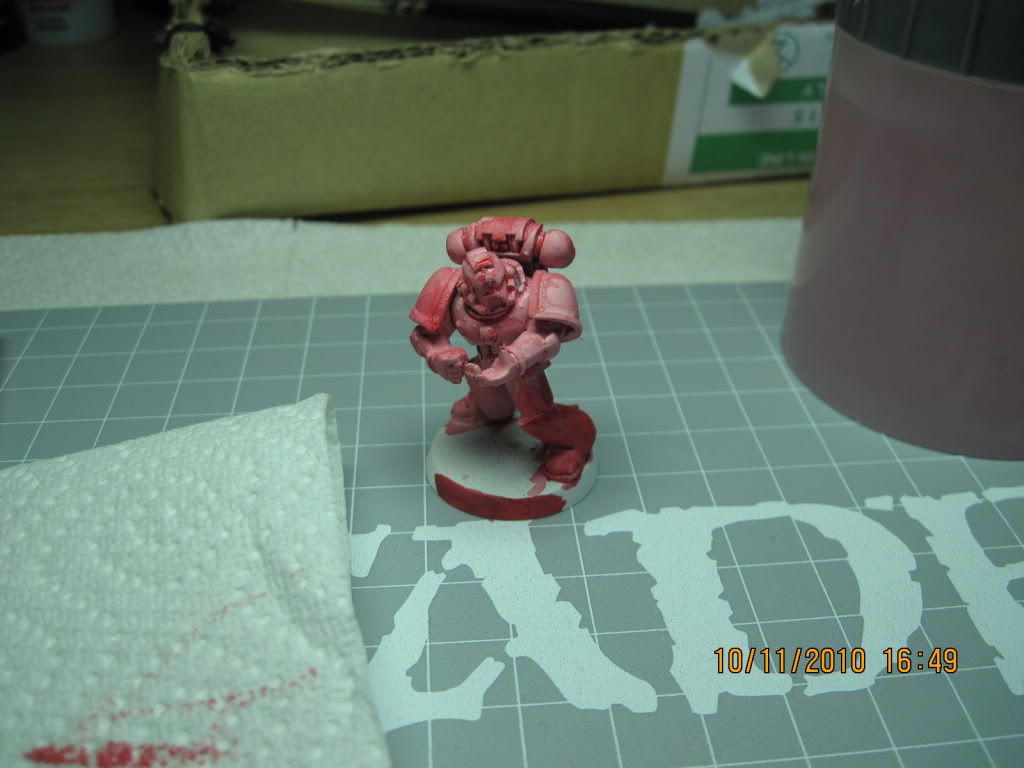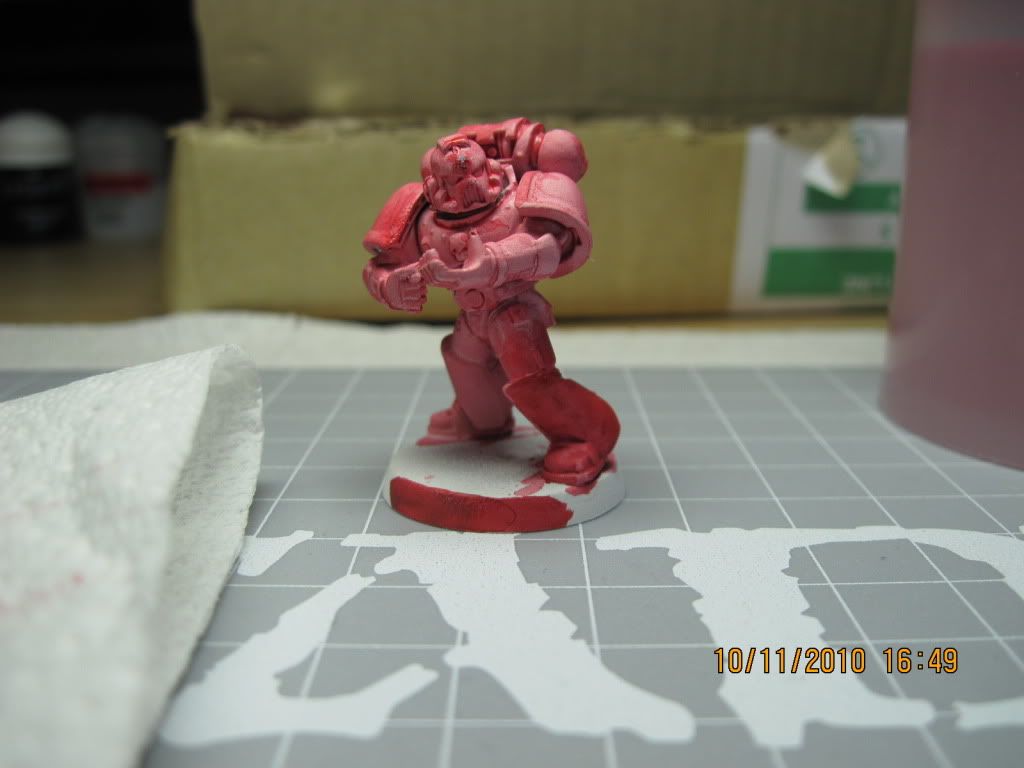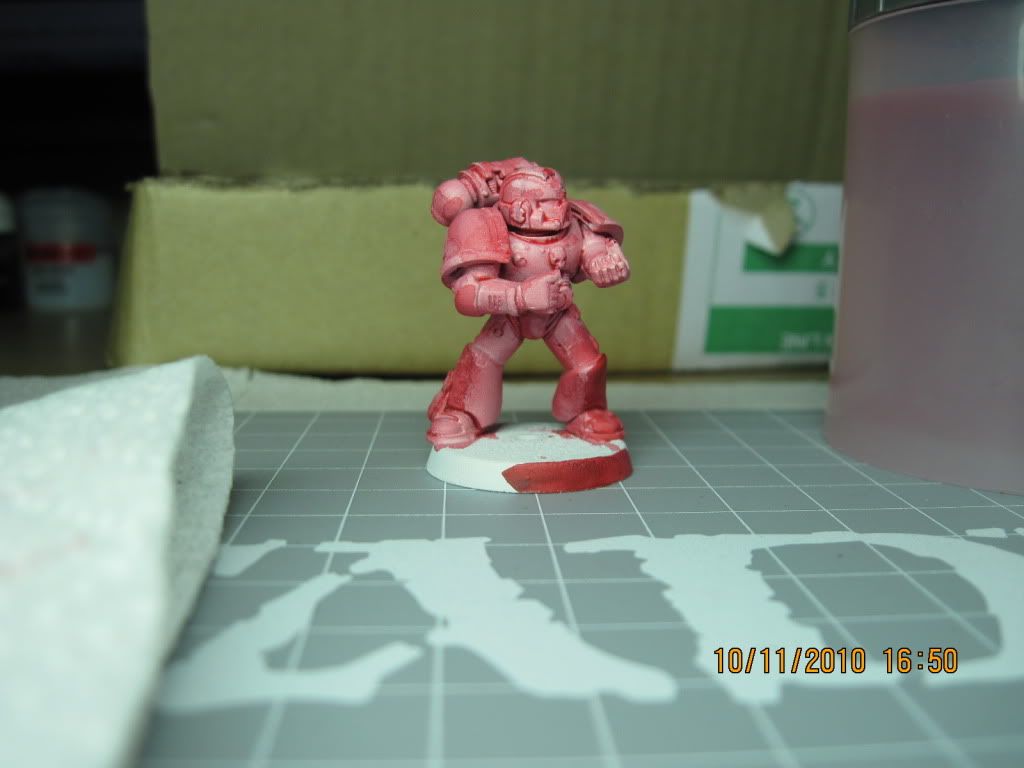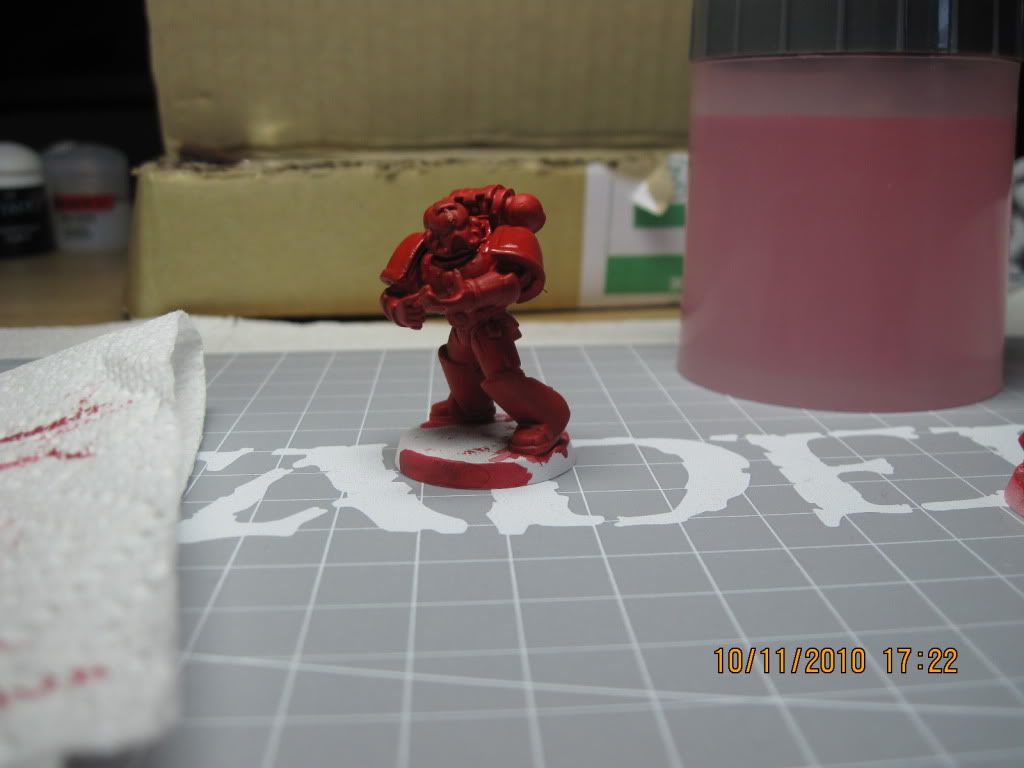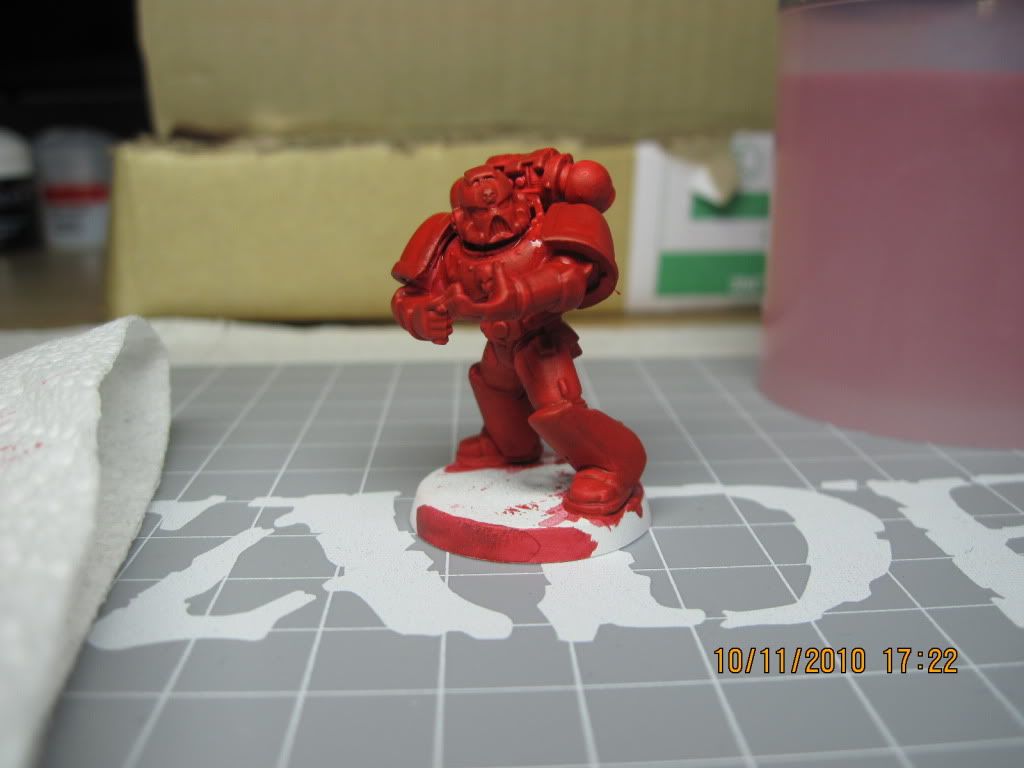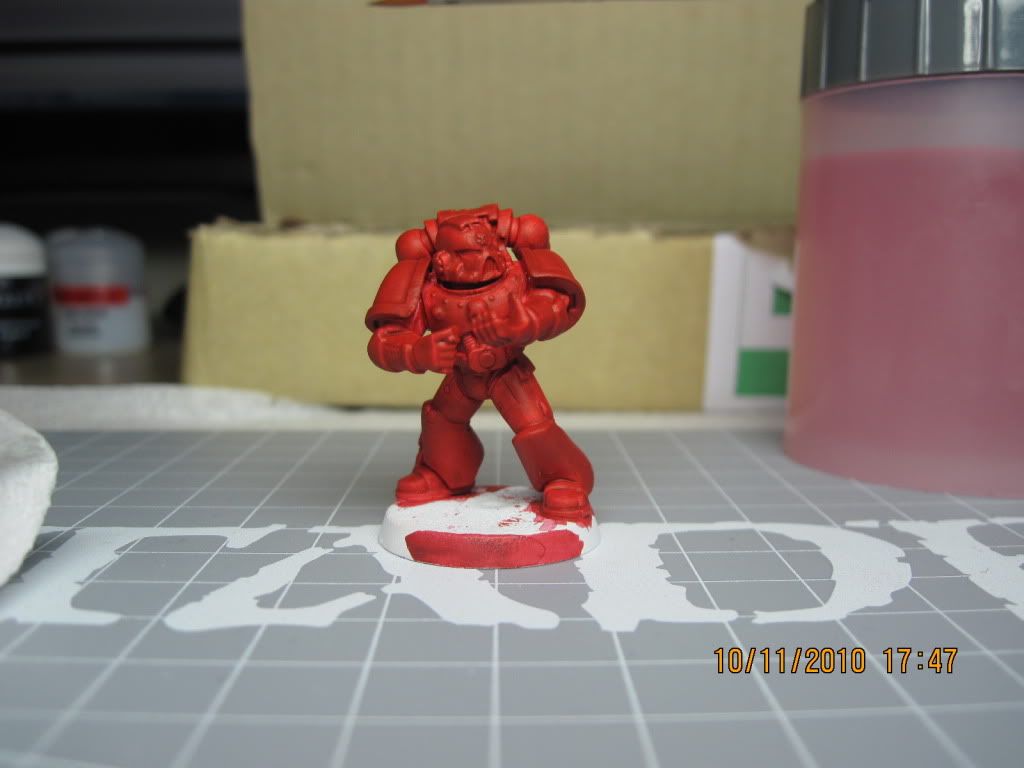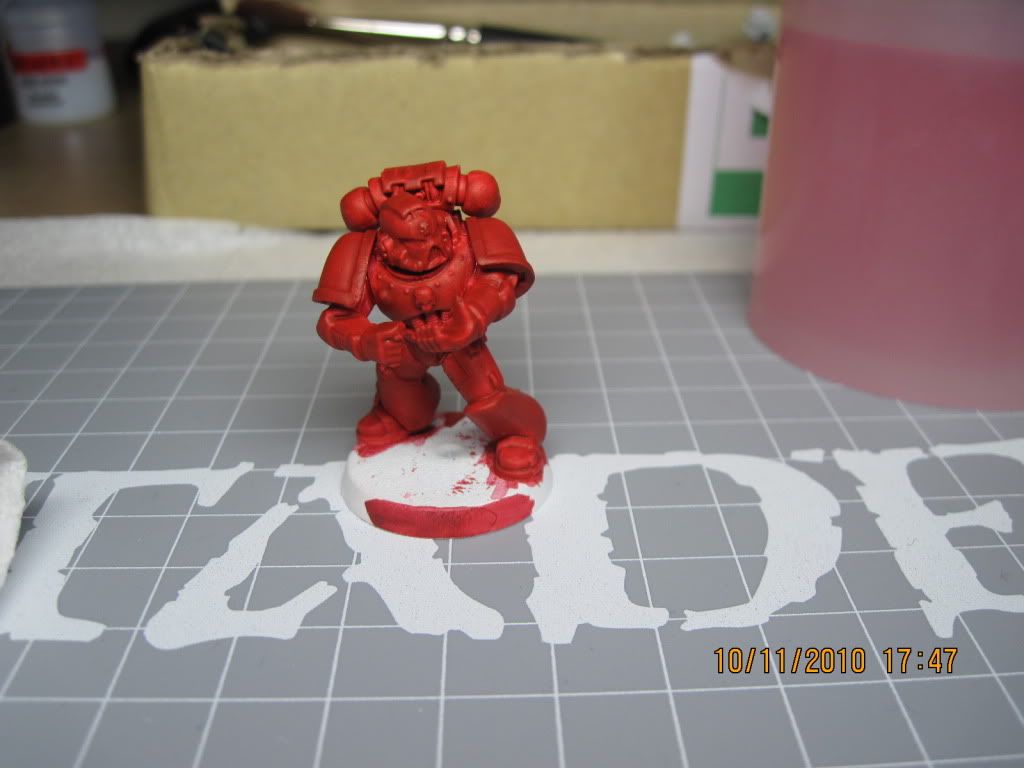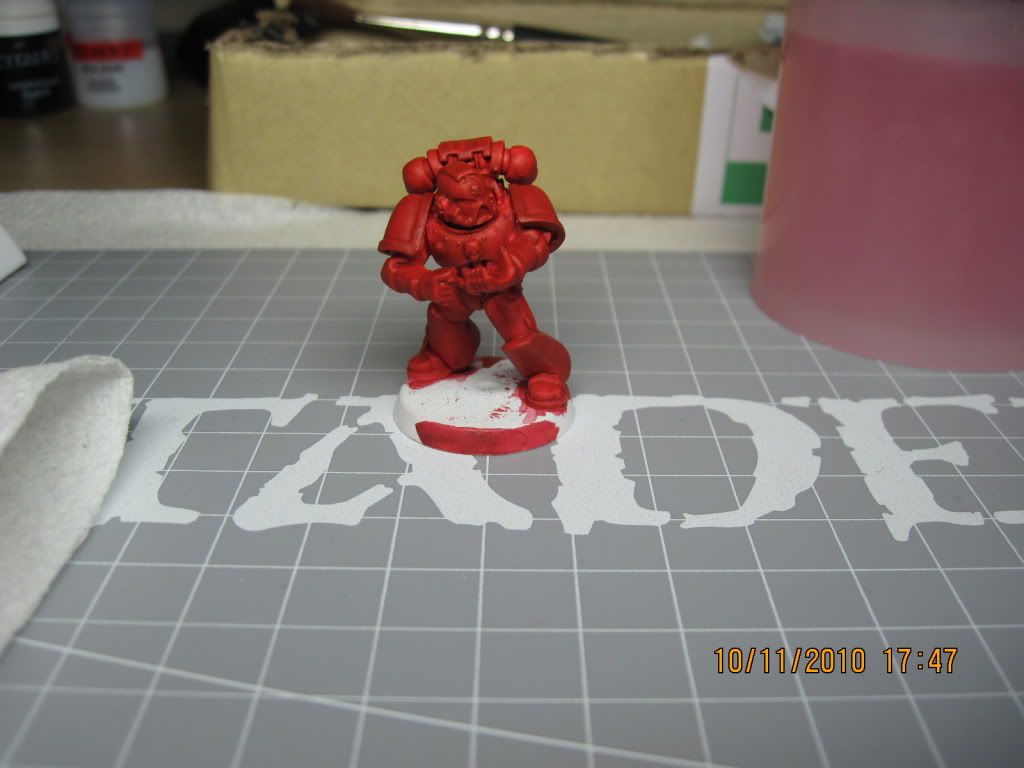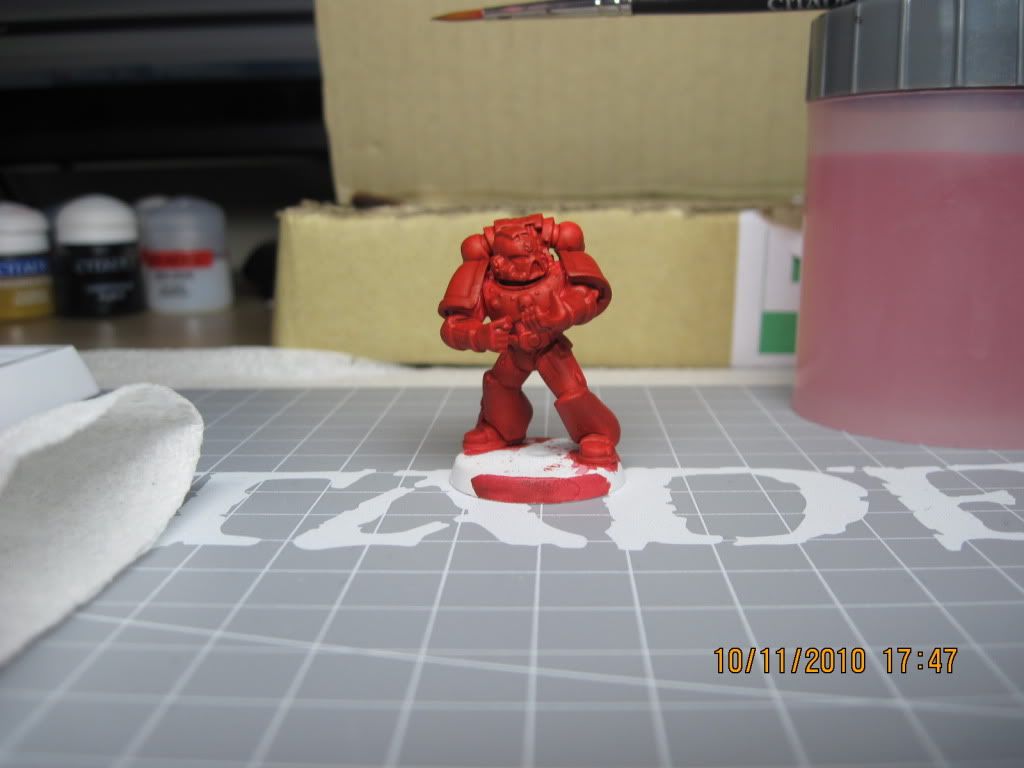I'll have a stab at answering your questions:
a. If you seriously want to work the paint, do it with a wet palette. Do a search through the forums, there's quite a bit of data on it. If you're using an open palette (or 'dry' palette), a few drops of drying retarder can do wonders. There's no clean way to measure paint from a non-dropper bottle, I reckon; I just dip the tip of an ice cream stick in it and that counts as my 'one drop'. Not an exact science, as you say. Never tried a syringe, though.
b. For basecoating, the easiest way to look at is probably to do colour blocking - block in the colours you want for each area. So, in your case, red for the armour bits, black for the piping and other parts, etc. Then go ahead and finish each blocked part separately. A lot of painters wind up finishing an area completely (basecoat, wash, highlight, sometimes even seal) before moving on to the fiddly bits. If you're sloppy about brush control and paint thickness (like I am), this will save the fig detail when you need to re-coat areas that aren't supposed to be in the basecoat colour.
c. Drying times vary, depending on your paint dilution factor and if the paint gets into recesses, if so how much paint, etc. No accurate measure is available. But generally, acrylics dry very quickly, even if you slap it on out the bottle. I've never measured it - I just slop the paint on, watch 5 to 10 mins of a movie or go through a song while surfing the net, and it's usually completely dry by the time I get my mind back on track. If you're concerned about speed, get a hair dryer on low and blast your wet fig with it. You may run the risk of tide marks if you do it this way, especially with pooling washes (if your brush control is poor).
To shade your red, though, I would suggest that instead of dark flesh or brown, you mix in a bit of green with your basecoat red paint and use that instead. Adding increasing amounts of green will transition your red to a deeper, darker shade of brown. There's a tipping point, though - add too much green and your nice, dark brown will turn dirty green, which you'd probably want to avoid.
Does this make any sense?
As you improve, you might consider shading with other colours like purple and blue, too, but that's a different story.

